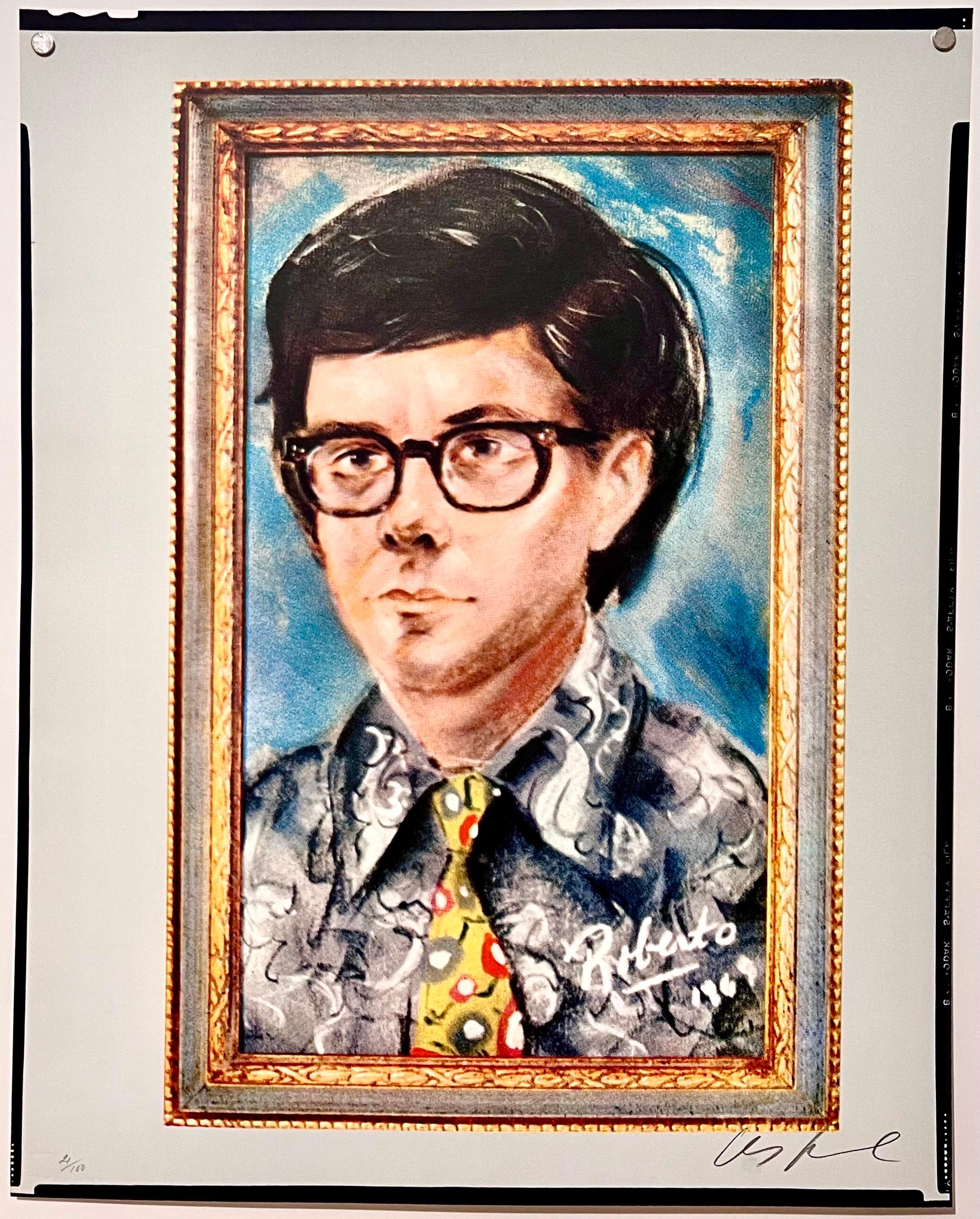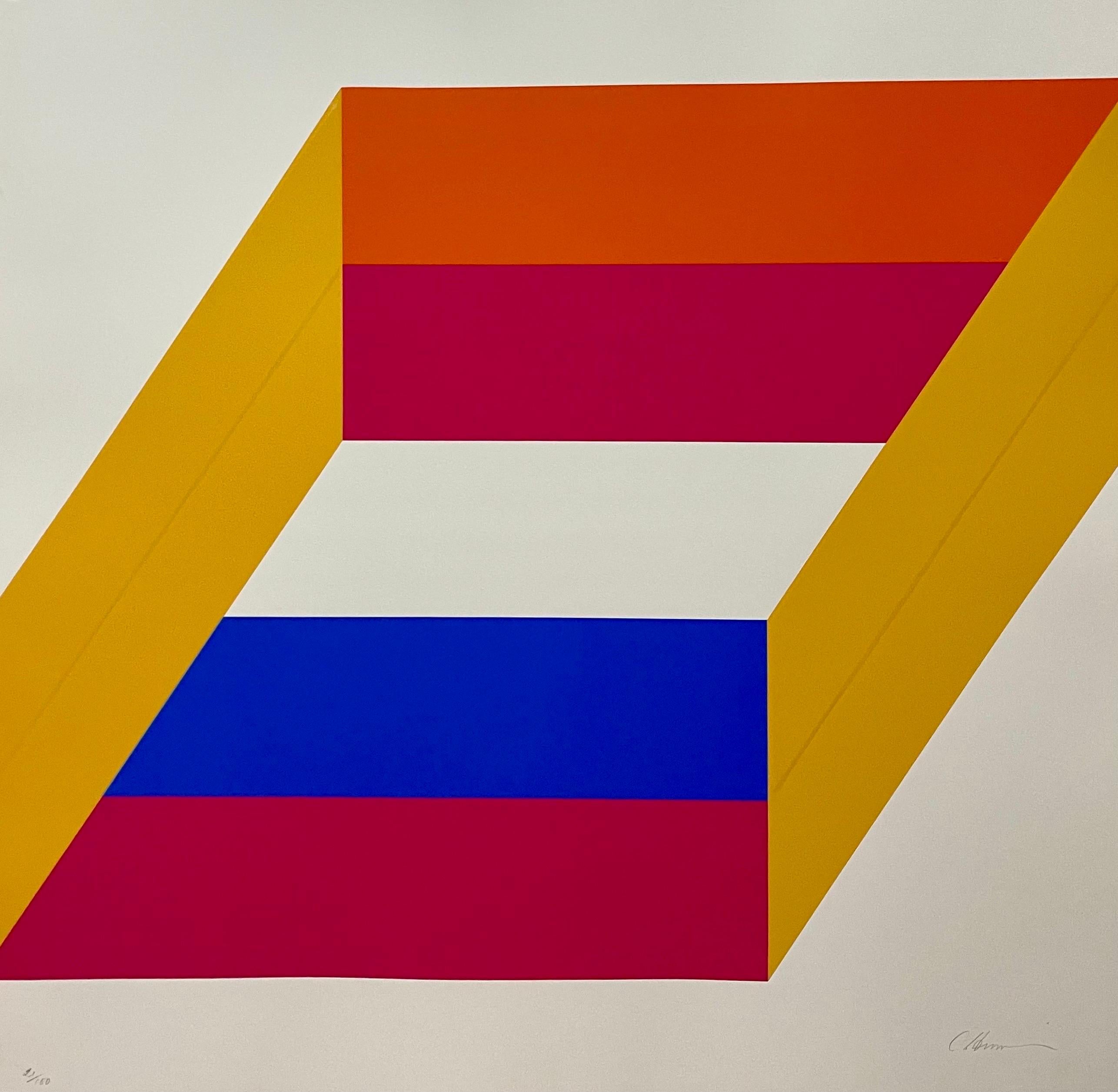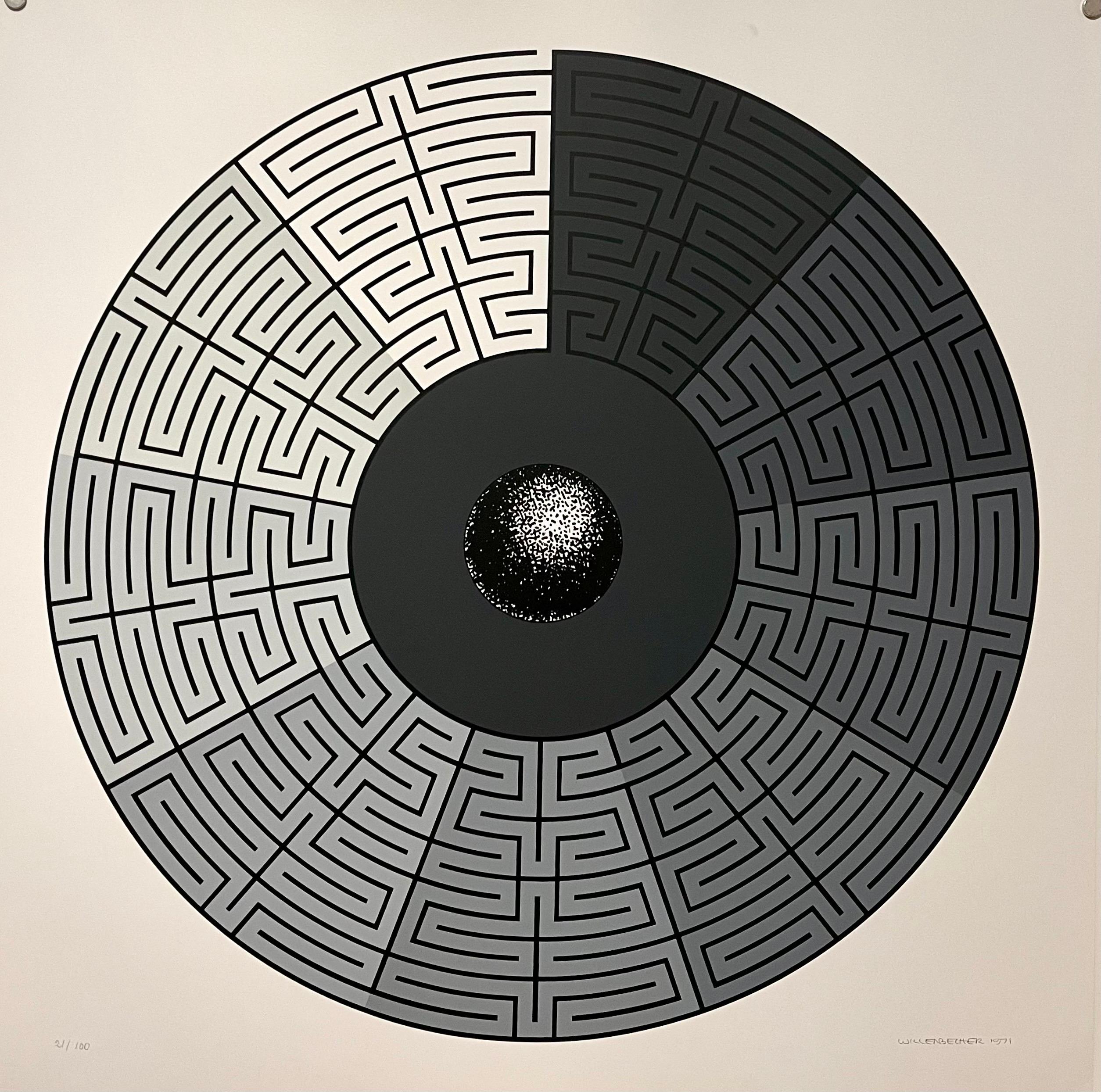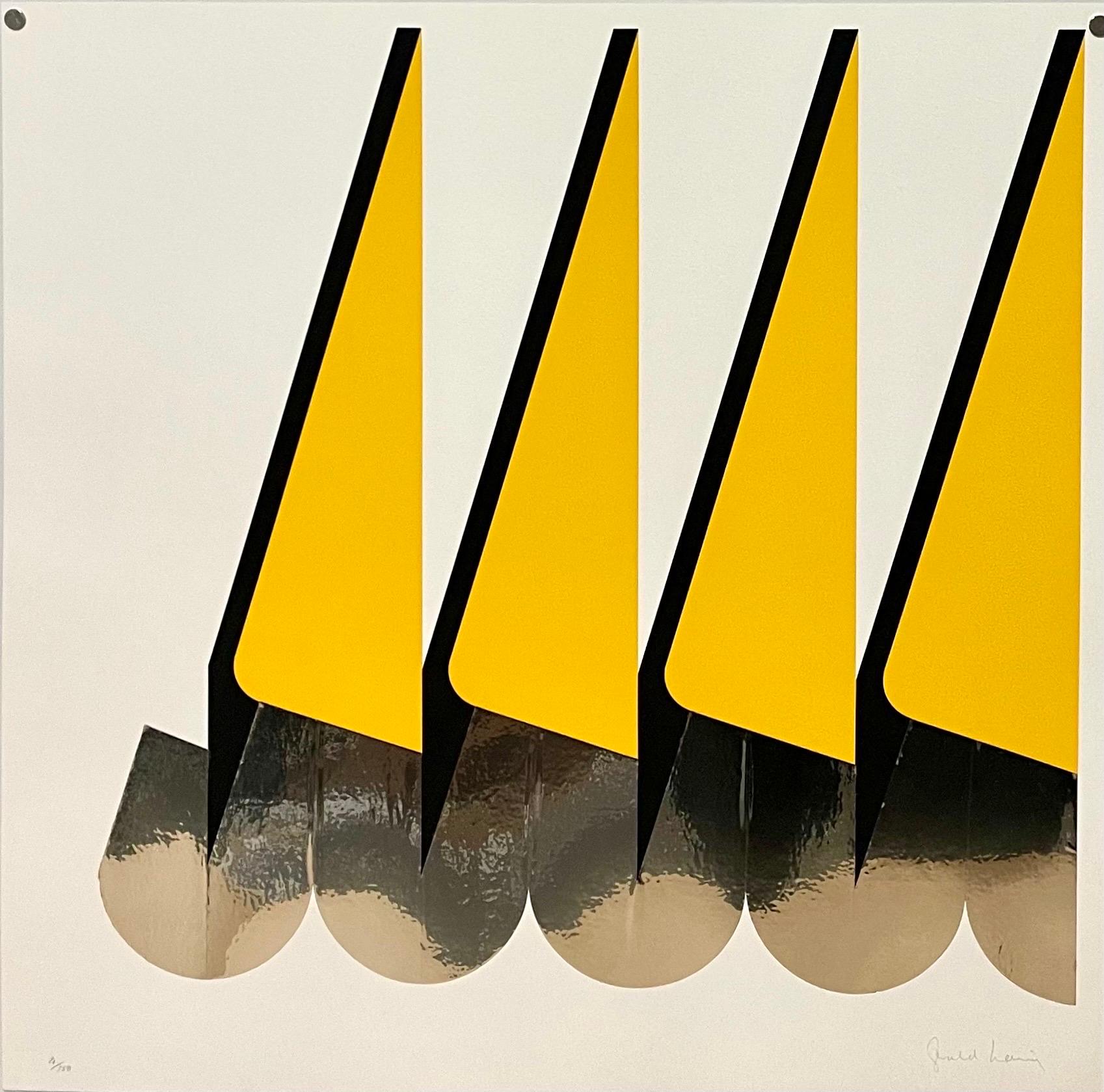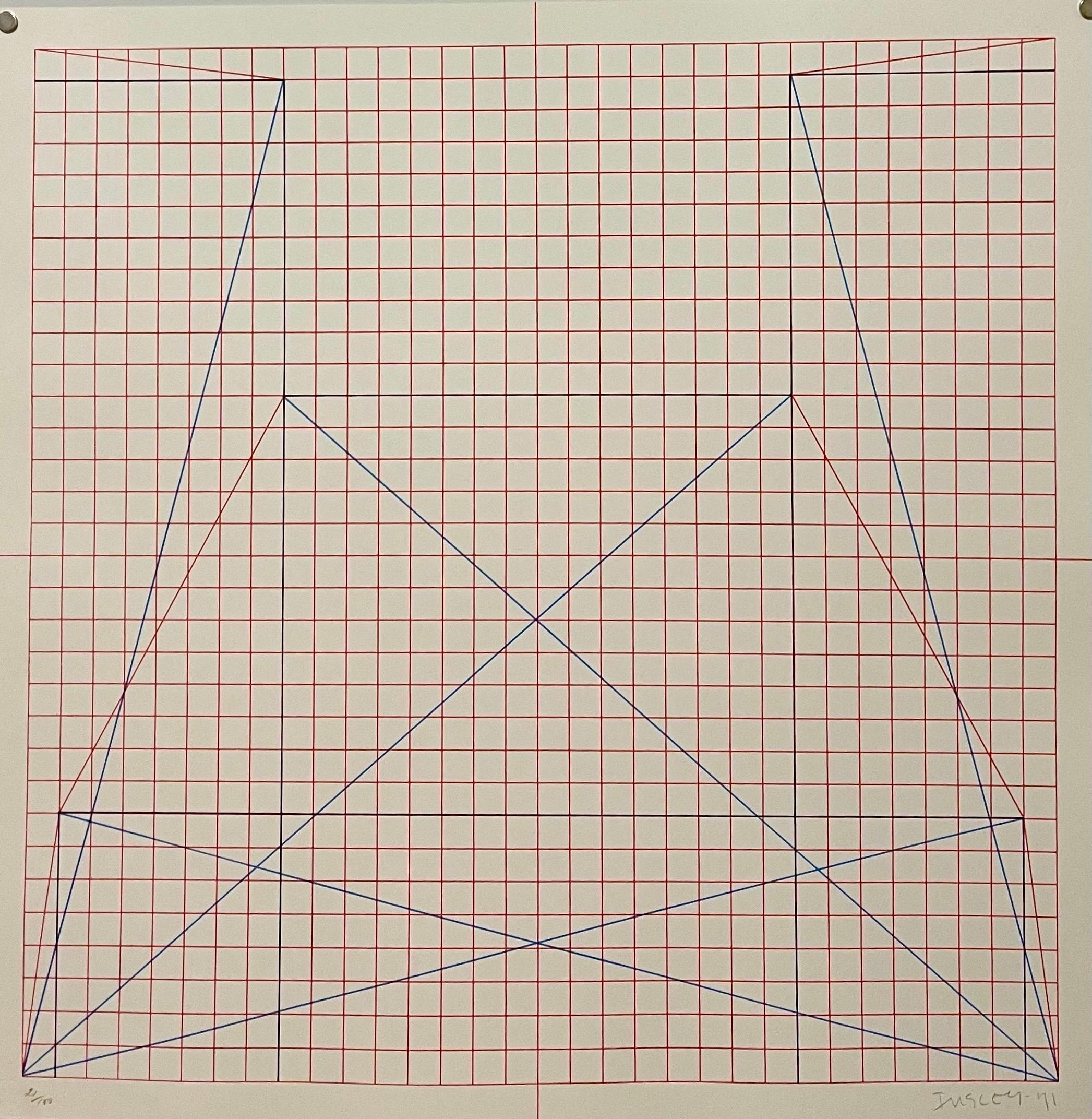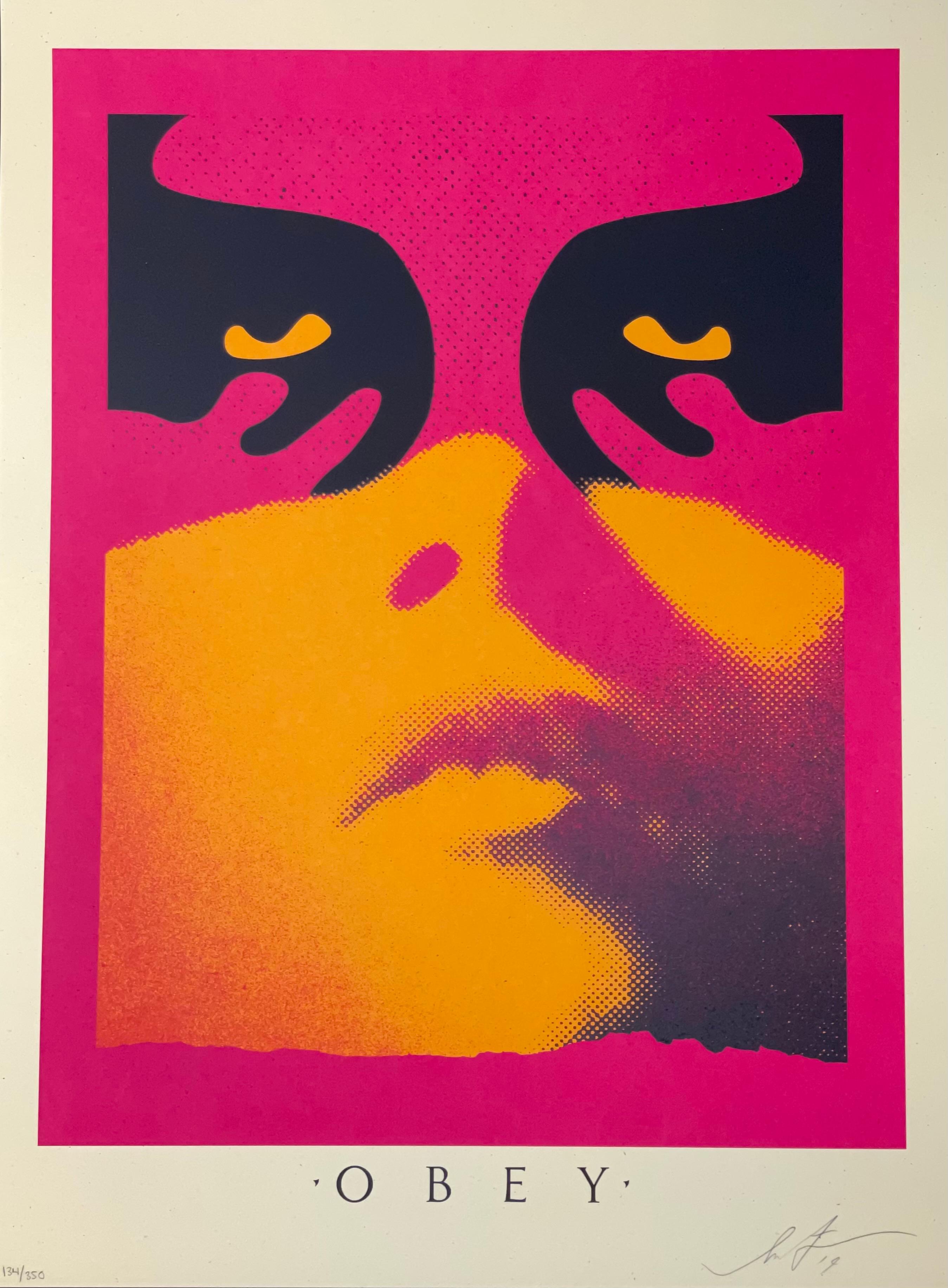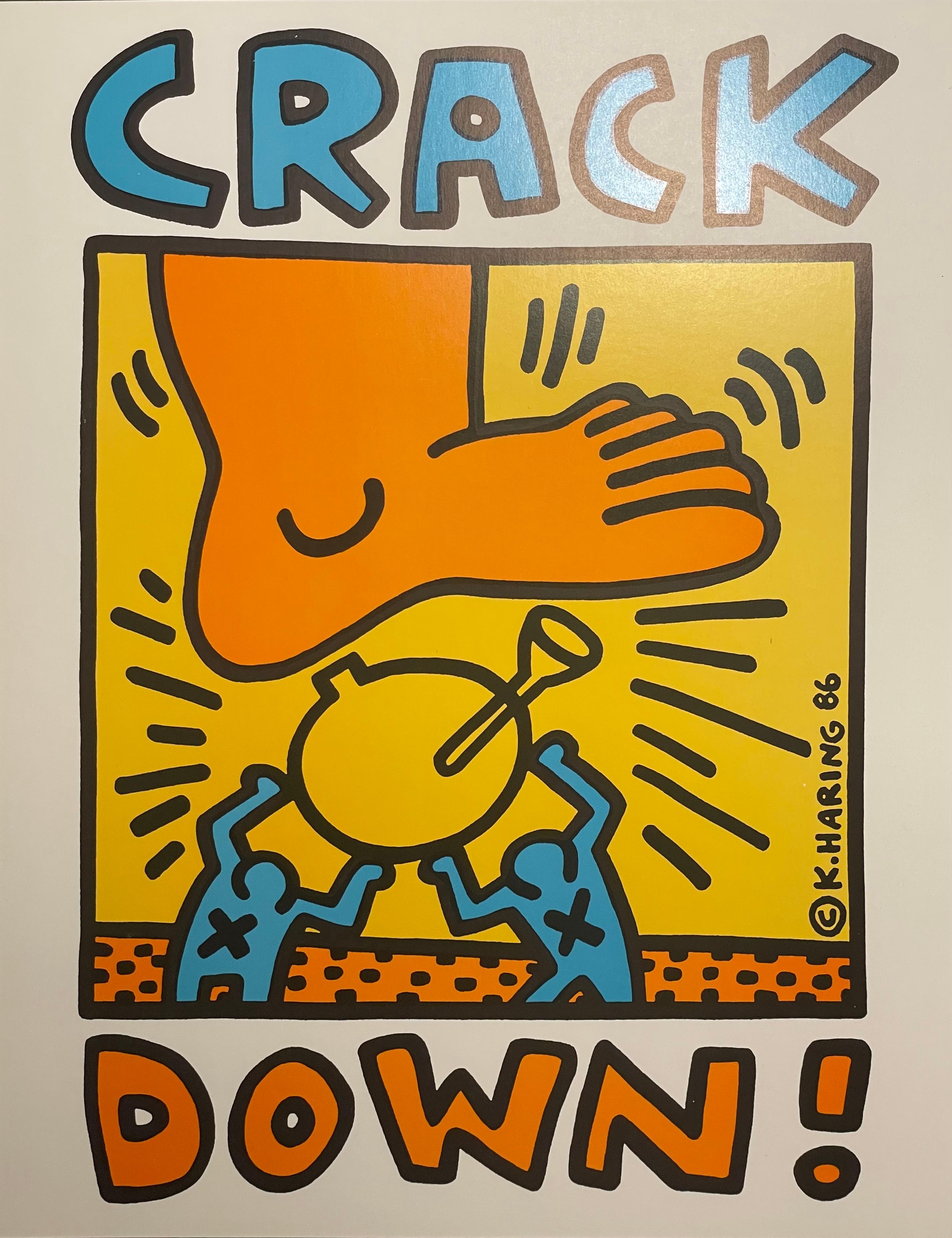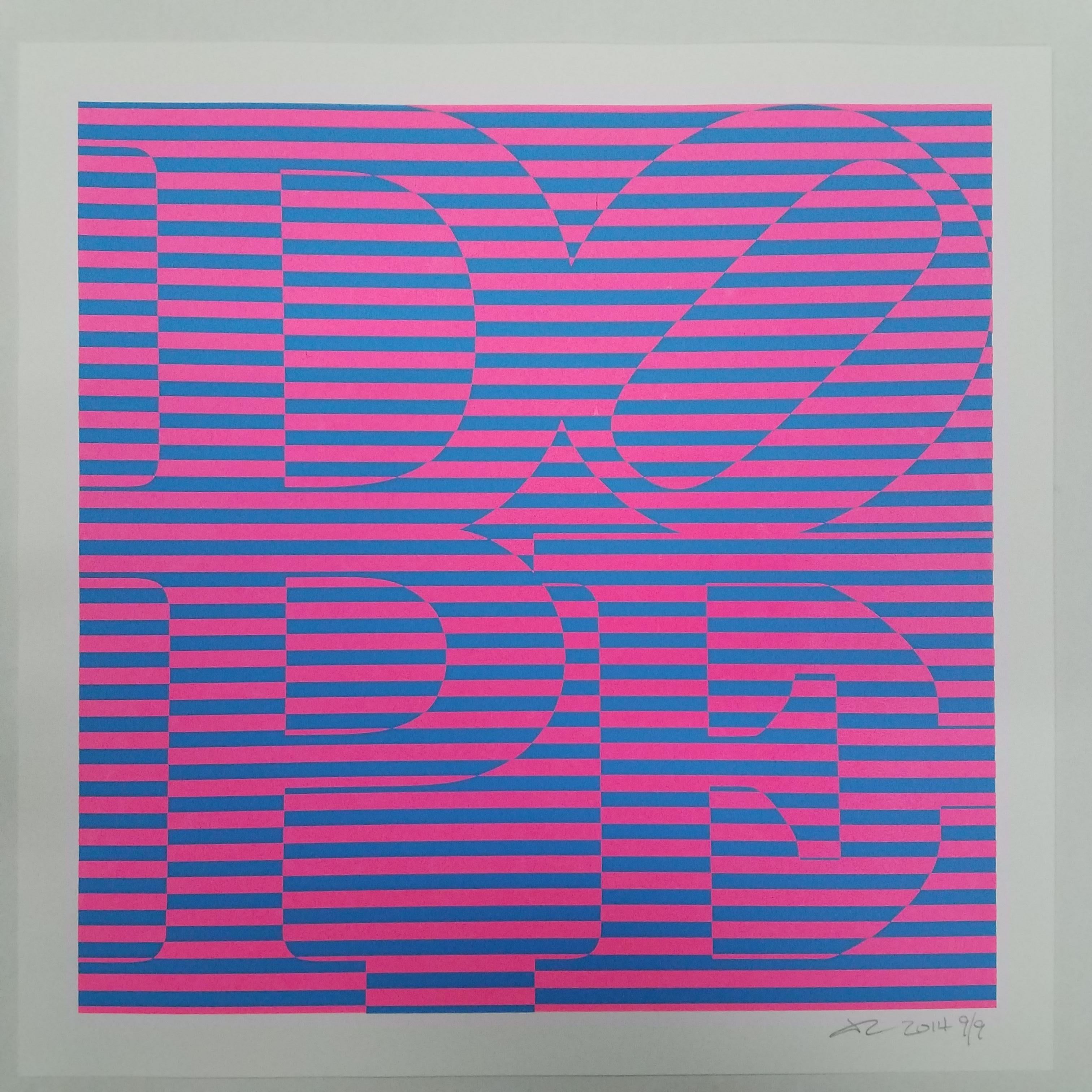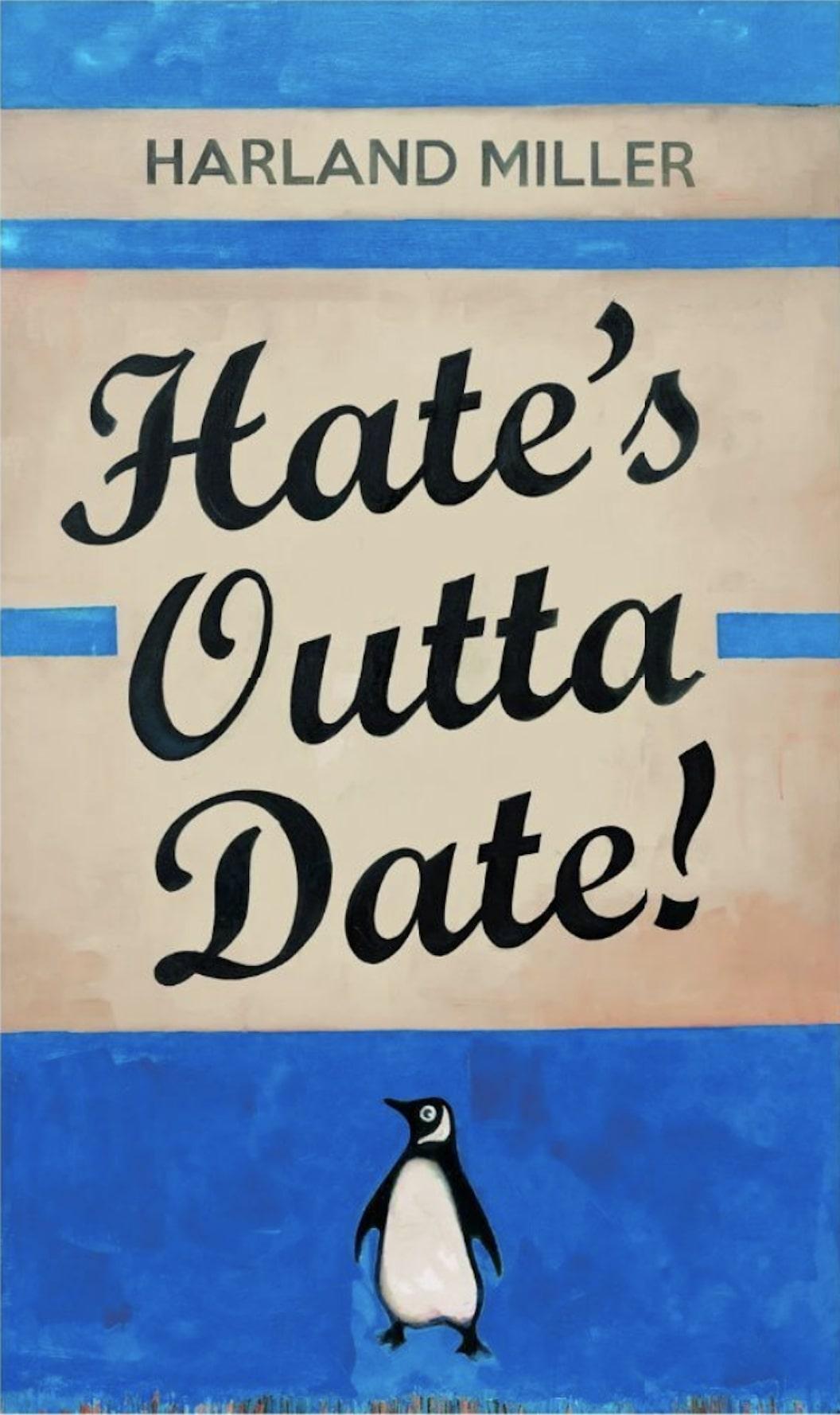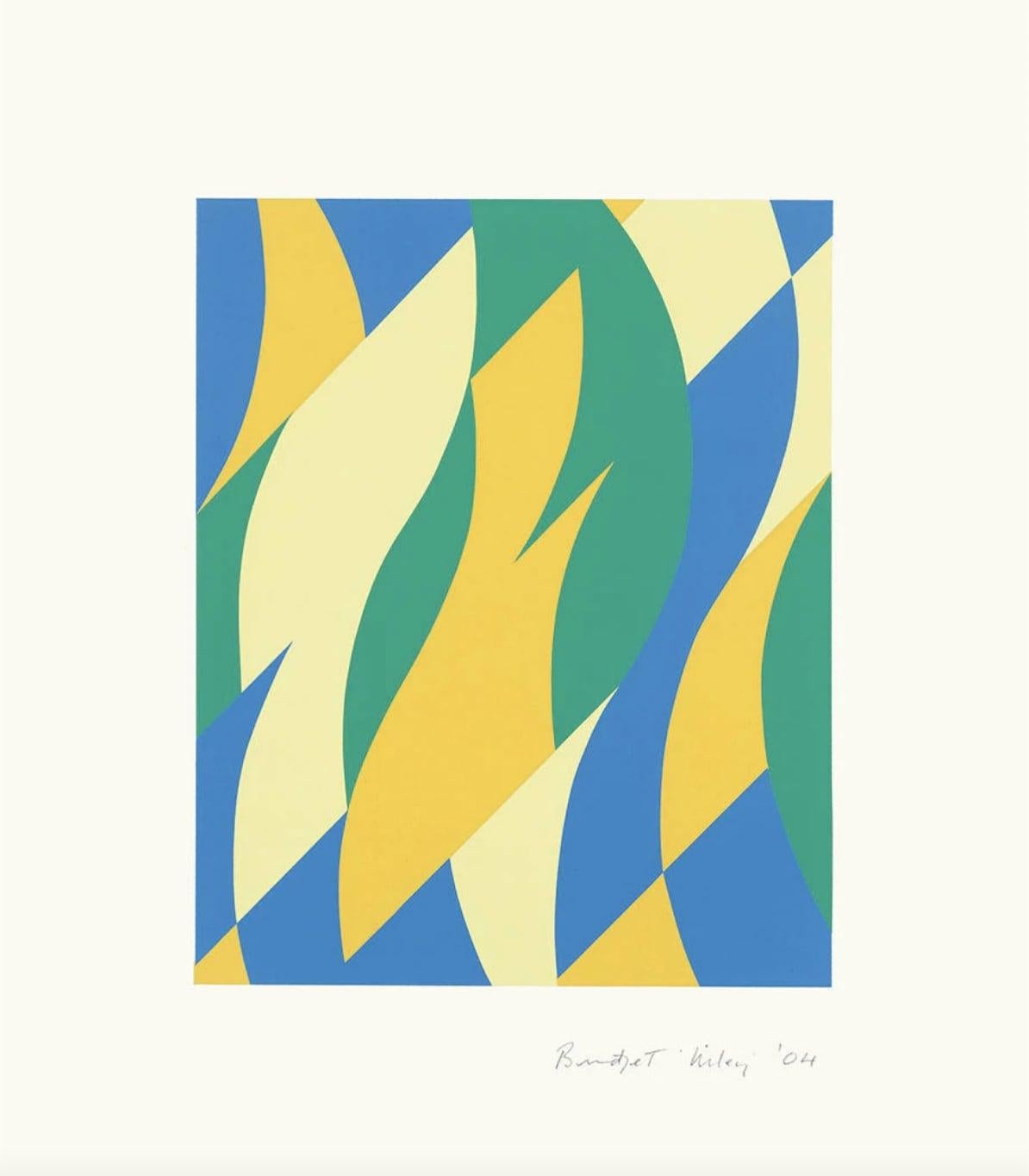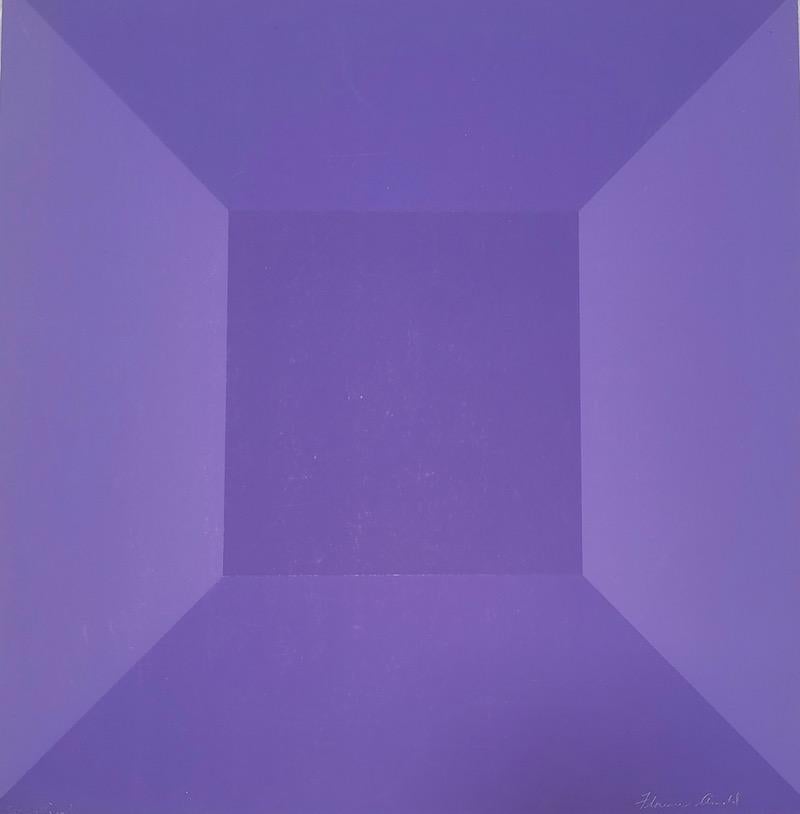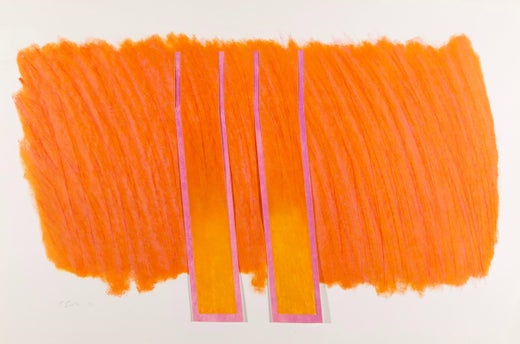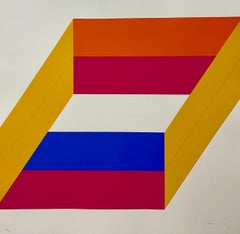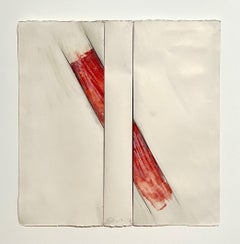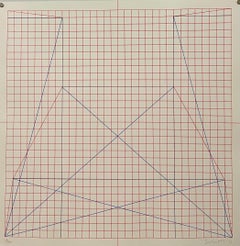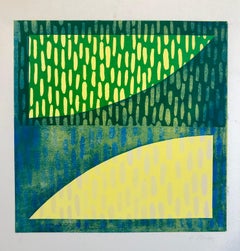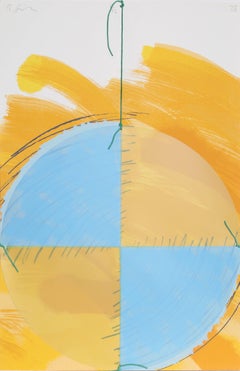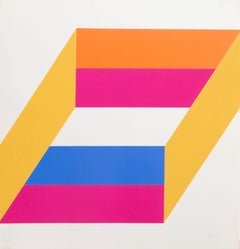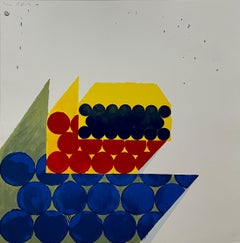
Abstract Minimalist Color Silkscreen Print Richard Smith On The Bowery Pop Art
View Similar Items
Want more images or videos?
Request additional images or videos from the seller
1 of 9
Richard SmithAbstract Minimalist Color Silkscreen Print Richard Smith On The Bowery Pop Art1969-1971
1969-1971
$2,000List Price
About the Item
- Creator:Richard Smith (1931 - 2016, English)
- Creation Year:1969-1971
- Dimensions:Height: 25.5 in (64.77 cm)Width: 25.5 in (64.77 cm)
- Medium:
- Movement & Style:
- Period:
- Condition:good. minor wear. never framed. kept in original portfolio.
- Gallery Location:Surfside, FL
- Reference Number:1stDibs: LU38210286312
Richard Smith
Charles Richard "Dick" Smith was an English printmaker and painter. He Attended St Albans School of Art followed by post-graduate studies at the Royal College of Art, London, from 1954-57. Smith shared a flat-cum-studio with Peter Blake in his second year at the RCA, and then again for two years after he left the college in 1957. When Terence Conran's Soup Kitchen opened on Fleet Street in the late 1950s, it featured a letter-collage mural by Smith and Blake. Michael Chow would later commission Smith to design installations for his restaurant in Los Angeles, and Chow and Conran have remained two of his biggest supporters. In 1959 he moved to New York to teach on a Harkness Fellowship, staying for two years, where he produced paintings combining the formal qualities of many of the American abstract painters which made references to American commercial culture. The artist's first solo exhibition was at the Green Gallery. As his work matured it tended to be more minimal, often painted using one colour with a second only as an accent. In trying to find ways of transposing ideas, Smith began to question the two-dimensional properties of art itself and to find ways by which a painting could express the shape of reality as he saw it. These principles he carried into his graphic work by introducing cut, folded and stapled elements into his prints; some works were multi-leaved screenprinting, and others printed onto three-dimensional fabricated metal. Smith returned to England in 1963 - specifically East Tytherton, Wiltshire where Howard Hodgkin was a neighbour - and gained critical acclaim for extending the boundaries of painting into three dimensions, creating sculptural shaped canvases with monumental presence, which literally protruded into the space of the gallery. Evocative titles such as Panatella and Revlon, and cosmetic, synthetic colours alluded to the consumer landscapes of urban America which had proved so influential. He showed at the Kasmin Gallery, a venture between Kas and the Marquess of Dufferin and Ava in New Bond Street, throughout the 60s, more-widely known as David Hockney's first gallery. Smith was invited to exhibit at the XXXV Venice Biennale as the official British artist in 1970. Smith taught with Richard Hamilton at Gateshead in 1965, where he met Mark Lancaster and Stephen Buckley, and again in 2000, becoming close to the artist and his wife, Terry. By the late 1960s Smith's ambition to produce paintings which shared a common sensibility with other media, such as film and photography, began to wane and he focused on the formal qualities of painting. First exhibited in New York in 1971, the traditional wooden supports of the canvases were replaced by aluminium rods and strings, allowing them to be hung freely in response to the surrounding architecture. Smith continued in the subsequent decades to construct site-specific works in public and private spaces often hanging from the ceilings or architectural supports. He resettled in Patchogue, New York in around 1977. Smith was awarded the CBE in 1971.
About the Seller
4.9
Platinum Seller
Premium sellers with a 4.7+ rating and 24-hour response times
Established in 1995
1stDibs seller since 2014
1,782 sales on 1stDibs
Authenticity Guarantee
In the unlikely event there’s an issue with an item’s authenticity, contact us within 1 year for a full refund. DetailsMoney-Back Guarantee
If your item is not as described, is damaged in transit, or does not arrive, contact us within 7 days for a full refund. Details24-Hour Cancellation
You have a 24-hour grace period in which to reconsider your purchase, with no questions asked.Vetted Professional Sellers
Our world-class sellers must adhere to strict standards for service and quality, maintaining the integrity of our listings.Price-Match Guarantee
If you find that a seller listed the same item for a lower price elsewhere, we’ll match it.Trusted Global Delivery
Our best-in-class carrier network provides specialized shipping options worldwide, including custom delivery.More From This Seller
View All1969-71 Abstract Minimalist Color Silkscreen Print Charles Hinman On The Bowery
By Charles Hinman
Located in Surfside, FL
Charles Hinman
On the Bowery, 1969 - 1971
silkscreen on Schoeller's Parole Paper, edition of 100 + 20 A.P.
25.5 x 25.5 inches, signed, numbered 21/100
Screenprint in color on wove p...
Category
1960s Pop Art Abstract Prints
Materials
Lithograph, Screen
Original Abstract Collage Painting British American Pop Artist Richard Smith
By Richard Smith
Located in Surfside, FL
Richard Smith, British (1931-2016)
Untitled (Abstract Composition) (1976)
Gouache, crayon, charcoal and metal staples on Arches paper
Hand signed lower center
sheet: 22 x 22 inches
...
Category
1970s Minimalist Abstract Paintings
Materials
Metal
Abstract Minimalist Color Silkscreen Print Will Insley On The Bowery Pop Art
Located in Surfside, FL
Will Insley
On the Bowery, 1969 - 1971
silkscreen on Schoeller's Parole Paper, edition of 100 + 20 A.P.
25.5 x 25.5 inches, signed, numbered 21/100
Screenprint in color on wove paper
Hand signed, published by Edition Domberger, Bonlanden, West Germany (with their blindstamp)
Provenance: Collection of Tom Levine
On the Bowery, 1971. The portfolio consists of nine screenprints in colors (one with mylar collage), on wove paper, by representative artists of the Pop Art period. Cy Twombly, Robert Ryman, Will Insley, Robert Indiana, Les Levine, John Willenbecher...
Category
1960s Pop Art Abstract Prints
Materials
Lithograph, Screen
Abstract Modernist Colorful Bold Monoprint Monotype Painting Print Pierre Obando
By Pierre Obando
Located in Surfside, FL
Pierre Andre Obando creates process oriented abstract paintings. He was born in Belize City, Belize and grew up in the Caribbean, the U.S. Virgin Islands, Miami, Fl and Jackson, MS.
Pierre Obando completed his MFA at Hunter College and completed his undergraduate studies at New World School of the Arts, Miami, Fl. His work was featured in the Queens International Biennial in 2004, and 2006 at the Queens Museum of Art. His work has been in group exhibitions at Angela Hanley Gallery, Los Angeles, CA; Rockland Center for the Arts, West Nyack, NY; Rush Arts Gallery, New York, NY; MACO Mexico Art Fair in Mexico City; Nina Freudenheim Gallery, Buffalo, NY; Royale Projects, Indian Wells, CA; The Painting Center, New York, NY; and Dean Project, New York, NY. In 2008, he had a solo exhibition at Heskin Contemporary, New York, NY and in 2009, at project space show at Rush Arts Gallery, New York, NY. He has participated in the Atlantic Center for the Arts Artists-in-Residence Program. In the fall of 2012, he participated in the group show Caribe Now, at the Nathan Cumming Foundation, which was organized by El Museo del Barrio, New York, NY. Contemporary Pattern and Decoration piece, The original movement was championed by the gallery owner Holly Solomon. The P&D movement wanted to revive an interest in minor forms such as patterning which at that point was equated with triviality. The prevailing negative view of decoration was one not generally shared by non-Western cultures, The Pattern and Decoration movement was influenced by sources outside of what was considered to be fine art. Blurring the line between art and design, many P&D works mimic patterns like those on wallpapers, printed fabrics, and quilts. There is a close connection between the Pattern and Decoration movement and the Feminist art movement. The P&D movement arose in opposition to the Minimalist and Conceptualist movements. Mary Grigoriadis, Valerie Jaudon, Joyce Kozloff, Miriam Schapiro, Robert Zakanitch were early proponents of this style. The artist lives and works in New York City.
Education:
2001 MFA, Painting, Hunter College, New York, NY
2000 Study Abroad, Slade School, UCL, London, United Kingdom
1997 BFA, Painting, New World School of The Arts, Miami, FL
Solo Exhibitions:
2015 ‘Like New’, Thierry Goldberg Gallery, New York, NY
2009 ‘Nowhere’, Rush Arts, New York, NY
2008 ‘Noise’, Heskin Contemporary, New York, NY
Group Exhibitions:
2018 ‘Revival: Contemporary Pattern and Decoration’, El Museo at Hostos, Bronx, NY
Including artists: Abelardo Cruz Santiago Pierre Obando Antonio Pulgarín Keisha Scarville Mickalene Thomas and others.
2017 Locust Projects Contemporary in Miami benefit auction including artists Dara Friedman, Trenton Doyle Hancock, Larry Bell, and more
2017 ‘Browsing Chamber’, Torch Gallery, Amsterdam, Netherlands
2015 ‘#BemisPainters, 1982-2015’, Bemis Center, Omaha, NE
2015 ‘Spat Spell’, Thierry Goldberg Gallery, New York, NY
2013 ‘Un-Natural Constellations’, Newman Popiashvili Gallery, New York, NY
2012 ‘Caribe Now’, Nathan Cummings Foundation/El Museo del Barrio, New York, NY
2012 ‘Lucid Fence’, Dean Project, New York, NY
2012 ‘Abstract Gambol’, Heskin Contemporary, New York, NY
2012 ‘Reenacting Sense’, Yace Gallery, Long Island City, NY
2010 ‘Continuing Color Abstraction’, The Painting Center, New York, NY
2009 ‘West/East’, Royale Projects, Indian Wells, CA
2009 ‘Alternative Abstraction’, Nina Freudenheim Gallery, Buffalo, NY
Including works by Stephen Antonakos, Warren Isensee, Gary Lang, Melissa Meyer and Katherine Sehr...
Category
1990s Contemporary Abstract Prints
Materials
Monoprint, Monotype
Mod Abstract Expressionist Modernist Lithograph Edward Avedisian Color Field Art
By Edward Avedisian
Located in Surfside, FL
Edward Avedisian (1936-2007)
Cleo, Fur Queen, 1969
Lithograph in color on Arches wove paper.
Hand signed, dated and numbered in pencil.
Edition 100
Dimensions:
22.25 inches X 30.25...
Category
1960s Abstract Expressionist Abstract Prints
Materials
Lithograph
Abstract Modernist Colorful Bold Monoprint Monotype Painting Print Pierre Obando
By Pierre Obando
Located in Surfside, FL
Pierre Andre Obando creates process oriented abstract paintings. He was born in Belize City, Belize and grew up in the Caribbean, the U.S. Virgin Islands, Miami, Fl and Jackson, MS.
Pierre Obando completed his MFA at Hunter College and completed his undergraduate studies at New World School of the Arts, Miami, Fl. His work was featured in the Queens International Biennial in 2004, and 2006 at the Queens Museum of Art. His work has been in group exhibitions at Angela Hanley Gallery, Los Angeles, CA; Rockland Center for the Arts, West Nyack, NY; Rush Arts Gallery, New York, NY; MACO Mexico Art Fair in Mexico City; Nina Freudenheim Gallery, Buffalo, NY; Royale Projects, Indian Wells, CA; The Painting Center, New York, NY; and Dean Project, New York, NY. In 2008, he had a solo exhibition at Heskin Contemporary, New York, NY and in 2009, at project space show at Rush Arts Gallery, New York, NY. He has participated in the Atlantic Center for the Arts Artists-in-Residence Program. In the fall of 2012, he participated in the group show Caribe Now, at the Nathan Cumming Foundation, which was organized by El Museo del Barrio, New York, NY. Contemporary Pattern and Decoration piece, The original movement was championed by the gallery owner Holly Solomon. The P&D movement wanted to revive an interest in minor forms such as patterning which at that point was equated with triviality. The prevailing negative view of decoration was one not generally shared by non-Western cultures, The Pattern and Decoration movement was influenced by sources outside of what was considered to be fine art. Blurring the line between art and design, many P&D works mimic patterns like those on wallpapers, printed fabrics, and quilts. There is a close connection between the Pattern and Decoration movement and the Feminist art movement. The P&D movement arose in opposition to the Minimalist and Conceptualist movements. Mary Grigoriadis, Valerie Jaudon, Joyce Kozloff, Miriam Schapiro, Robert Zakanitch were early proponents of this style. The artist lives and works in New York City.
Education:
2001 MFA, Painting, Hunter College, New York, NY
2000 Study Abroad, Slade School, UCL, London, United Kingdom
1997 BFA, Painting, New World School of The Arts, Miami, FL
Solo Exhibitions:
2015 ‘Like New’, Thierry Goldberg Gallery, New York, NY
2009 ‘Nowhere’, Rush Arts, New York, NY
2008 ‘Noise’, Heskin Contemporary, New York, NY
Group Exhibitions:
2018 ‘Revival: Contemporary Pattern and Decoration’, El Museo at Hostos, Bronx, NY
Including artists: Abelardo Cruz Santiago Pierre Obando Antonio Pulgarín Keisha Scarville Mickalene Thomas and others.
2017 Locust Projects Contemporary in Miami benefit auction including artists Dara Friedman, Trenton Doyle Hancock, Larry Bell, and more
2017 ‘Browsing Chamber’, Torch Gallery, Amsterdam, Netherlands
2015 ‘#BemisPainters, 1982-2015’, Bemis Center, Omaha, NE
2015 ‘Spat Spell’, Thierry Goldberg Gallery, New York, NY
2013 ‘Un-Natural Constellations’, Newman Popiashvili Gallery, New York, NY
2012 ‘Caribe Now’, Nathan Cummings Foundation/El Museo del Barrio, New York, NY
2012 ‘Lucid Fence’, Dean Project, New York, NY
2012 ‘Abstract Gambol’, Heskin Contemporary, New York, NY
2012 ‘Reenacting Sense’, Yace Gallery, Long Island City, NY
2010 ‘Continuing Color Abstraction’, The Painting Center, New York, NY
2009 ‘West/East’, Royale Projects, Indian Wells, CA
2009 ‘Alternative Abstraction’, Nina Freudenheim Gallery, Buffalo, NY
Including works by Stephen Antonakos, Warren Isensee, Gary Lang, Melissa Meyer and Katherine Sehr...
Category
1990s Contemporary Abstract Prints
Materials
Monoprint, Monotype
You May Also Like
Times Square Remembered 2, Abstract Lithograph and Screenprint by Richard Smith
By Richard Smith
Located in Long Island City, NY
Artist: Richard Smith, British (1931 - 2016)
Title: Times Square Remembered 2
Year: 1973
Medium: Lithograph, Screenprint, and Collage, Signed and numbered in pencil
Edition: 42
Size:...
Category
1970s Abstract Expressionist Abstract Prints
Materials
Mixed Media, Lithograph, Screen
Untitled from the On the Bowery portfolio, Screenprint by Charles Hinman
By Charles Hinman
Located in Long Island City, NY
Artist: Charles Hinman, American (1932 - )
Title: Untitled from the On the Bowery portfolio
Year: 1969
Medium: Screenprint, signed and numbered in pencil
Edition: AP V/XX
Size: 25.75...
Category
1960s Abstract Geometric Abstract Prints
Materials
Screen
Series 4, Geometric Abstract Screenprint by Ilya Bolotowsky
By Ilya Bolotowsky
Located in Long Island City, NY
A silkscreen print by Ilya Bolotowsky circa 1970. A retro modern piece with an abstract geometric design.
Artist: Ilya Bolotowsky, Russian/American (1907 - 1981)
Title: Series 4...
Category
1970s Abstract Geometric Abstract Prints
Materials
Screen
untitled 1 Minimalist Abstract Silkscreen 1969 by Michael Argov
By Michael Argov
Located in Long Island City, NY
Artist: Michael Argov, Austrian/Israeli (1920 - 1982)
Title: untitled 1
Year: 1969
Medium: Serigraph, signed and numbered in pencil
Edition: 32
Size: 27.5 x 20 inches (69.85 x 50.8 cm)
Category
1960s Abstract Geometric Abstract Prints
Materials
Screen
Richard Smith, Signature Etching & Aquatint Signed 17/25 British Pop Art pioneer
By Richard Smith
Located in New York, NY
Richard Smith
Signature, 1997
Etching and Aquatint
22 3/4 × 18 inches
Edition 17/25
Signed and numbered 17/25 in graphite on the lower front
RICHARD SMITH BIOGRAPHY
Charles Richard ...
Category
1990s Abstract Geometric Abstract Prints
Materials
Etching, Aquatint
Number Four, Abstract Expressionist Screenprint by Darryl Hughto
By Darryl Hughto
Located in Long Island City, NY
Artist: Darryl Hughto, American (1943 - )
Title: Number Four
Date: 1978
Screenprint, signed, titled, dated and numbered in pencil
Edition: 150
Image Size: 39 x 29 inches
Size: 42.5...
Category
1970s Abstract Expressionist Abstract Prints
Materials
Screen
Recently Viewed
View AllMore Ways To Browse
String Art Vintage
Vintage Paper Clip
Lichtenstein Silkscreen
Tom Wesselmann Prints
St Leger
Leger Hand Signed Lithograph
Robert Indiana Silkscreen
Mark Rothko Signed Lithograph
Garden Fish Sculptures
Fernand Leger Hand Signed Lithograph
Eva Green
Tom Wesselmann Signed
Kenneth Noland Lithograph
Roy Lichtenstein Composition
Cy Twombly Lithograph
Robert St Pierre
Jean Dubuffet 1973
Pierre Clerk
